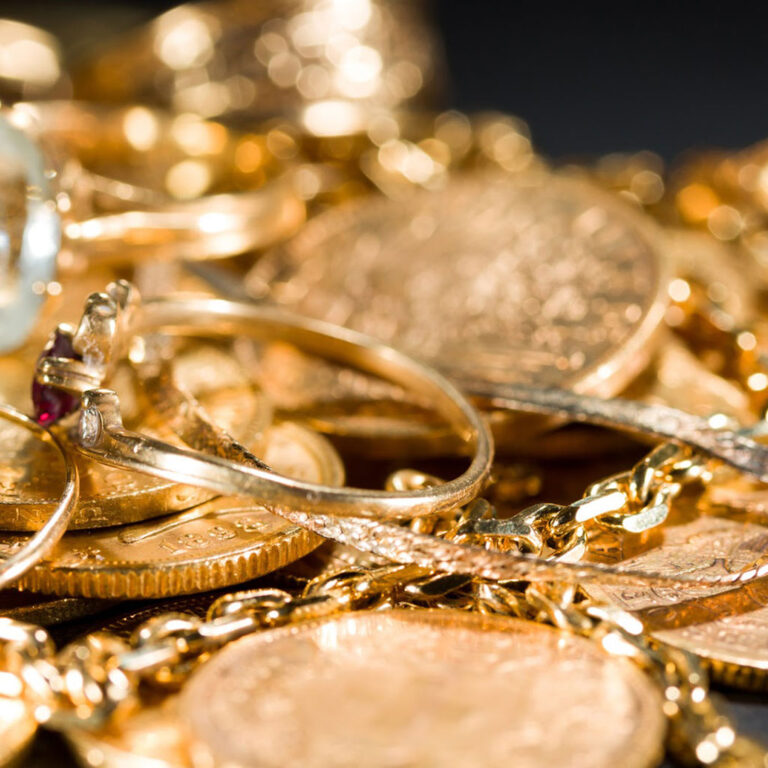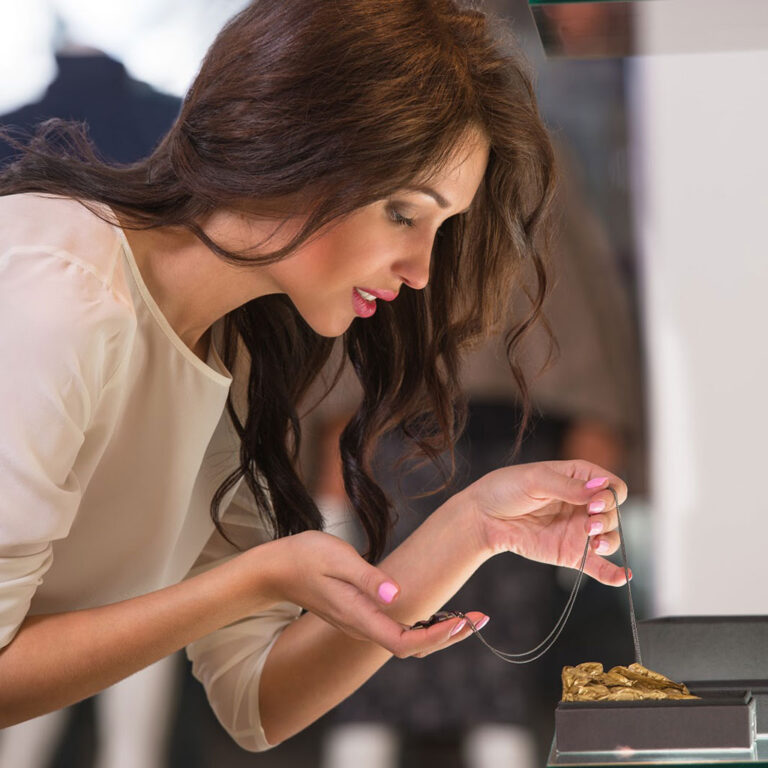United States Gold
Table of Contents
All throughout our country’s history, fortune seekers have been searching the land for gold. The first gold rush in the USA took place in 1799, in North Carolina. The biggest one was the California gold rush of 1849, which brought many determined individuals west hoping to strike it rich. Also, the Alaska gold rush of 1896 brought many prospectors to the Klondike area.
The United States has ranked fourth in world gold production since 2010, exceeded only by China, Russia, and Australia. Australia currently leads the world in gold reserves, with Russia coming in second, then South Africa, and the USA. As of 2020, there has been a shift in what gold is being used for; roughly half of mined gold is purchased as an investment. About 36% is used for jewelry, another 6% for technology, and another 8% goes to central banks and other institutions.
For years now, gold production in the USA has held its own against the most high-yielding countries in the world. This abundance has enabled US companies to provide a variety of products and investment opportunities. Despite the supply, demand continues to rise, and with it, the price of gold. On this page, we discuss some kinds of gold produced in the USA, and what makes it different.


Black Hills Gold Jewelry
Black Hills gold is named for the location it comes from, the Black Hills of North and South Dakota. The Black Hills had their own gold rush from 1876-1877, which is also when Black Hills gold was first produced. When artisans make jewelry using this type of gold, the jewelry normally features three colors of gold: Yellow gold, white gold, and rose gold. This jewelry also tends to display patterns that show intricate leaves or grape clusters. Typically, yellow gold is used as the base, while white gold and rose gold are preferred for the leaves, grapes, and vines.
Black Hills gold may or may not have diamonds or other gemstones. Black Hills Gold items include rings, necklaces, pendants, earrings, and bracelets. Watches and pins made from Black Hills Gold are also available if one knows where to look.
If you have come to be in possession of a piece that displays this 3-color combination of gold leaf, or has intricate designs that feature leaves or grapes, you may have Black Hills gold jewelry. You can also check for an engraving, or examine the box it came in for more information. The different colors come from other metal alloys mixed with gold like copper, nickel, silver, etc.
If you think you might have a piece of Black Hills gold jewelry, bring it into your local Crown Gold Exchange location, and we will be happy to authenticate it for you, and help you determine its value. Given the rarity of these pieces, we will likely make you a strong offer for it. We also purchase yellow gold, white gold, and rose gold in any form, so don’t worry too much about the condition of your item.

White Gold
When gold is combined with silver or nickel, the resulting alloy can appear whitish in color. This type of gold is relatively common, and the professionals at Crown Gold Exchange know exactly how to determine how much of each kind of metal is present in the alloy. White gold may also contain copper or zinc. Typically white gold is 10-karat (sometimes marked as “417”), 14-karat (585), or 18-karat (750) in purity, though 14-karat is most common.
Another form of “white gold” is gold that has been dipped in rhodium. Rhodium is also a precious metal that is white in color. Sometimes this outer coating wears off in patches, revealing the yellow gold underneath. Whether made as an alloy or dipped in rhodium, white gold is used for all kinds of jewelry, including rings (of all kinds), bracelets, necklaces, pendants, chains, earrings, cufflinks, and anklets.
Crown Gold Exchange will purchase any of these white gold items. Bring them into any of our convenient Southland locations, and we will be happy to verify the quality of your item and make an offer. Many people who bring in their white gold actually think they are bringing us silver, and are pleasantly surprised to receive much more money than they expected.
We Value Your Property
Crown Gold Exchange holds the utmost respect for you and your valuables. When you visit one of our locations, we make sure that you feel welcome, and that your property is protected. We use industry-standard equipment to ensure accurate measurement of your valuables, and we have a special process to keep your valuables safe. Our accuracy enables us to offer you top dollar, and we have several different payment methods available for your convenience, so you won’t be waiting around to get paid.
Crown Gold Exchange will purchase any kind of gold you bring us, including 8-karat, 10-karat, 14-karat, 18-karat, 21-karat, 22-karat, 24-karat, or anything else. We buy gold bars, gold bullion, gold jewelry and some gold plated items like pocket watches. If you happen to be in possession of an exclusive piece made by a top gold designer such as Cartier, Tiffany, Rolex, or Patek Philippe, we will often pay more than the weight of the item. Such special pieces often command a higher price on the secondary market due to their superior craftsmanship.
Common United States Gold Coins
The following is a list of common gold coins minted by the US throughout history. If you have any of these pieces, they have considerable value to collectors and gold dealers. Bring it to one of our locations, and we’ll be happy to appraise it for you.
$1 Dollar Liberty Head
$1 Indian Head Princess
$1 Indian Head
$2.50 Liberty
$2.50 Indian Head
$3 Indian Princess
$5 Modern Commemorative
$5 Liberty Head half-eagle
$5 Indian Head half-eagle
$10 Liberty Head Eagle
$10 Indian Head Eagle
$20 Liberty Head Double Eagle
$20 St. Gaudens Double Eagle
$10 Modern Commemorative
American Gold Eagle Coins
$5 1/10 oz Eagle
$10 ¼ oz Eagle
$25 ½ oz Eagle
$50 1 oz Eagle
American Gold Buffalo
$5 1/10 oz Buffalo
$10 ¼ oz Buffalo
$25 ½ oz Buffalo
$50 1 oz Buffalo
